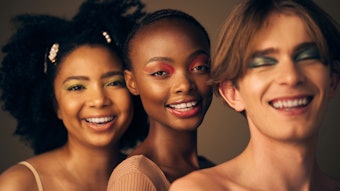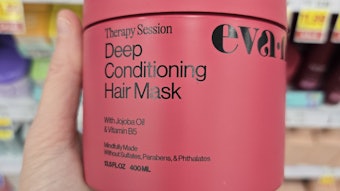Hair can be treated using several different types of products to alter the color. The different types of color-altering hair products include: bleach, temporary dyes, metallic dyes, natural dyes, semi-permanent dyes (often referred to as direct dyes) and permanent dyes (often referred to as oxidative dyes). This is the first in a series of three columns that will address the above color products, with the difference between bleach and temporary dyes being initially discussed.
Hair color is a result of melanin embedded in the cortex of the hair. The outer portion of the hair is referred to as the cuticle. Moving inward from the cuticle toward the core, the next region is the cortex. The cortex is where the naturally occulting pigments reside. Finally, the medulla is located at the center of the hair. The color of the hair is a result of the interaction of light with the pigments in the cortex of the hair. Methods that alter hair color, therefore, relate to either altering the pigment in the cortex or applying a color to the cortex.
Bleach
Bleaching hair is a process where the pigment in the hair is destroyed through a chemical reaction. Bleaching is used by itself or to remove pigment before color is deposited.
The bleaching agent must penetrate both the cuticle and the cortex without losing activity and without destroying the structure of the hair. Alkaline hydrogen peroxide is effective on intact hair, and peroxydisulfate (persulfate) is used for intensive bleaching. The color of the hair is destroyed in both processes. Hydrogen peroxide bleaches are two component systems that are mixed together just prior to use. Hydrogen peroxide is provided in an 8% solution in water, stabilized at about pH 3.5 and is mixed with alkaline solution immediately prior to bleaching to a pH of 9 -10.
Hair color is typically measured using a color level ranging from 1-12, as explained through the below and bleaching will generally reduce the number by 3-4 units.
1 = Black
2 = Dark brown
3 = Medium brown
4 = Light brown
5 = Lightest brown
6 = Dark blonde
7 = Medium blonde
8 = Light blonde
9 = Very light blonde
10 = Lightest blonde
11 = Super light blonde
12 = Ultra light blonde
Temporary Dyes
Temporary dyes are applied to the hair and last until hair is shampooed. The colorants do not penetrate hair, hence the "temporary" label. Large molecules are used to limit penetration. These materials have been extensively studied by the US Food and Drug Administration and a lot of information exists in the public domain.
Temporary dyes are easy to use and do not damage hair since they do not penetrate. There is no damage to the native pigment in the hair, so natural hair color can be obtained with washing. Temporary dyes provide the user with an opportunity to experiment with different colors. Since they are truly temporary (as opposed to lasting until the hair grows out), temporary dyes allow for quick and easy application and removal. A potential draw back is a color change during removal.










